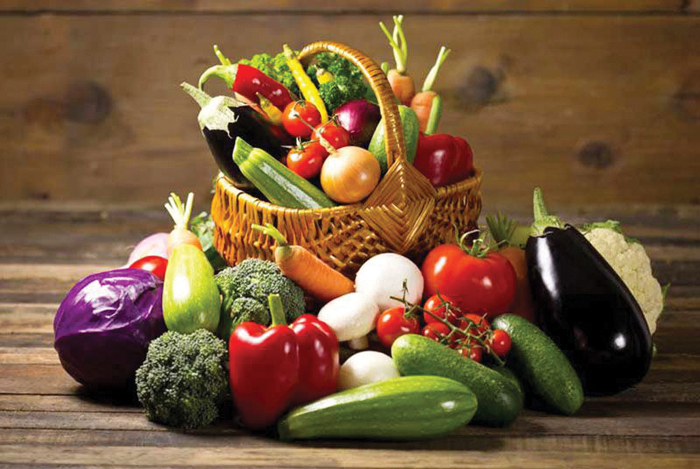Toi Degree column: June is National Fresh Fruit and Vegetable Month
Published 12:00 am Sunday, June 20, 2021
By Toi Degree
N.C. Cooperative Extension
June is National Fresh Fruit and Vegetable Month, and you can celebrate it by making half your plate with fruits and vegetables. Choose red, orange and dark-green vegetables like tomatoes, sweet potatoes and broccoli, along with other vegetables for your meals. Add fruit to meals as part of the main or side dishes or as dessert.
Fruits and vegetables contain many vital vitamins, minerals and plant chemicals. A diet rich in vegetables and fruits can help lower blood pressure, reduce the risk of heart disease and stroke, prevent some types of cancer, and lower risks of eye and digestive problems. Additionally, more fruits and vegetables in your diet will positively affect your blood sugar, bringing your appetite in check, thus reducing how much you eat and how frequent. Eating non-starchy vegetables and fruits like apples, pears, and green leafy vegetables may even promote weight loss. Their low glycemic loads prevent blood sugar spikes that can increase hunger.
So, now you are starting to see the importance of fruits and vegetables; variety is just as important as quantity. Eat five kinds of vegetables and two different fruits every day for good health. While no single fruit or vegetable provides all the nutrients you need to be healthy, eat plenty every day!
Here are a few tips to get more fruits and vegetables in each day:
- Keep fruit where you can see it. Place several ready-to-eat washed whole fruits in a bowl or store chopped colorful fruits in a glass bowl in the refrigerator to tempt a sweet tooth.
- Explore the produce aisle and choose something new. Variety and color are essential to a healthy diet. On most days, try to get at least one serving from each of the following categories: dark green leafy vegetables; yellow or orange fruits and vegetables; red fruits and vegetables; legumes (beans) and peas; and citrus fruits.
- Skip the potatoes. Choose other vegetables that are packed with different nutrients and more slowly digested carbohydrates.
- Make it a meal. Try cooking new recipes that include more vegetables. Salads, soups, and stir-fries are just a few ideas for increasing the number of tasty vegetables in your meals.
Summer is a great time to start incorporating more fruits and veggies into your diet! You can get fresh okra, corn, squash, zucchini, blueberries, cherries and so much more now. Don’t forget about the Rowan County Farmers’ Market — you can come out and get the freshest produce. The market is located at 228 E Kerr Street in Salisbury, and is open on Saturdays from 8 a.m.-noon. You will be able to get your produce for the week, flowers, baked goods, and who knows what else you’ll find. I’ll even be out there on June 26 demoing produce uses from the market.
Here is where you can learn to make half your plate with fruits and vegetables:
Visit MyPlate, take the quiz, and learn how to make every bite count. You will also be able to personalize resources and get started with MyPlate. To visit the site, go to https://www.myplate.gov/
For information on seasonal produce, go to https://snaped.fns.usda.gov/seasonal-produce-guide
This site serves as a wonderful guide that provides useful nutrition information, selection, storage, food facts and recipes. It’s simple to use — select the fruit or vegetable you’d like to learn more about and explore the possibilities.
Toi N. Degree is associate family and consumer education agent with North Carolina Cooperative Extension. Contact her at 704-216-8970 or toi_degree@ncsu.edu .






